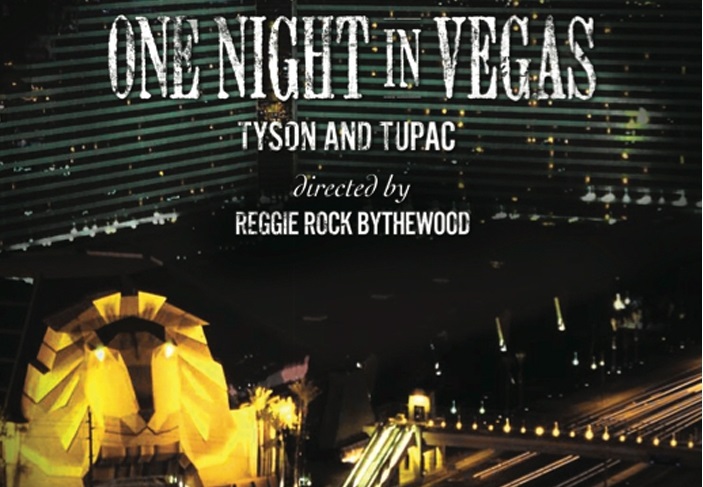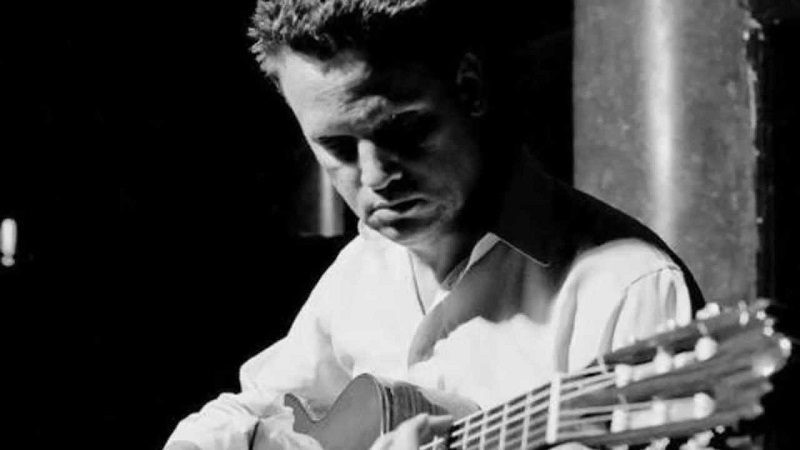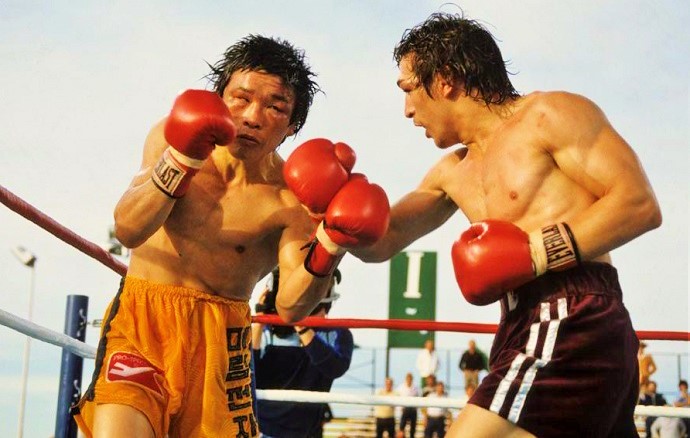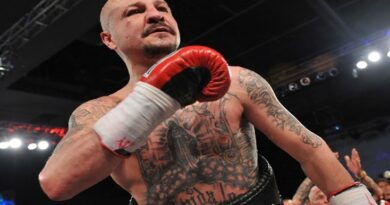One Night In Vegas
Part of ESPN’s acclaimed 30 for 30 series, One Night in Vegas offers fans of boxing and Mike Tyson something other than a conventional documentary on the exploits of “Iron Mike,” both in and out of the ring. Director Reggie Rock Bythewood instead pursues a narrative which conflates Tyson’s persona and career arc with that of renowned rapper Tupac Shakur, who was fatally shot on the Las Vegas strip on this date following Tyson’s 1996 bout with Bruce Seldon. Tupac not only attended the fight but also recorded a special song for Mike’s ring entrance that night.

Bythewood’s film captures the striking personal and professional convergence of Tyson and Tupac, with commentary from a bevy of friends and associates, both famous and obscure. Where it fails is through its inability to probe the psychology of the boxing-rap confluence it tries so hard to convey, which leaves the viewer feeling that, while much has been surveyed, little has been revealed.
“Mike is the hip hop champion,” celebrated rapper Nas says near the beginning of the film, clearly still somewhat in awe of Tyson’s violent fighting style. (Interestingly, Tupac often disparaged Nas when he was alive.) This is not an empty assertion. Born into poverty in the hellacious Brownsville section of Brooklyn, a hip-hop hotbed, Tyson’s rise mirrored the paths of so many successful rappers during the late 1980’s, when rap music was metastasizing into the aggressive genre whose machismo he would personify.
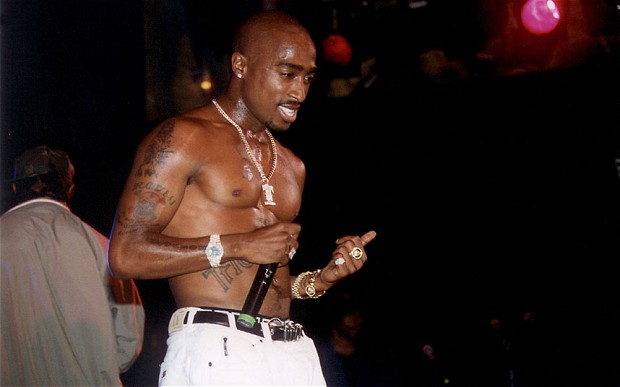
It seems entirely natural that boxing and rap would be synergized, since there are obvious links between the sport and the art: both require their practitioners to extract a requisite amount of rage and audacity from their darkest personal wells in order to communicate as forcibly as possible, whether by fists or by mouth, and without losing complete control. Boxing, as Tyson has always maintained, is an art.
Despite having recently regained the heavyweight championship with a brutal knockout over a terrified Frank Bruno, the post-Buster Douglas, post-prison Mike Tyson was no longer unconquerable. This didn’t mean, however, that the illusion of his invincibility didn’t persist. Coming out of prison, Tyson looked more menacing than before, boasting an improved physique and a goatee that made him appear older and colder looking, his snarl now even more visceral. Prior to the Seldon match, referee Richard Steele remembered how “as soon as I walked in [to Seldon’s room] I could feel the tension…I could see the nervousness.”
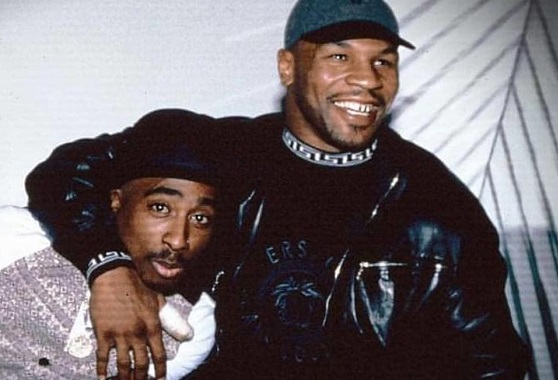
With only one loss in his career, Tyson’s reputation for ferocity hadn’t abated, and Seldon’s tentative approach in the ring gestures to the power a reputation can have in rendering an opponent impotent. Tyson scored a first round knockout after a series of innocuous-looking punches left a dazed Seldon unable to continue.
If one of the documentary’s shortcomings is its reliance on too many cameos and short interviews, its treatment of Seldon is commendable. With a face that bears the scars of a difficult life, the reflective ex-champion gets ample screen time, and his recollections are some of the most compelling. While he is, in the end, an afterthought in boxing history, the integration of his narrative into those of Tyson and Tupac makes for a more complete story, however anticlimactic the fight was.
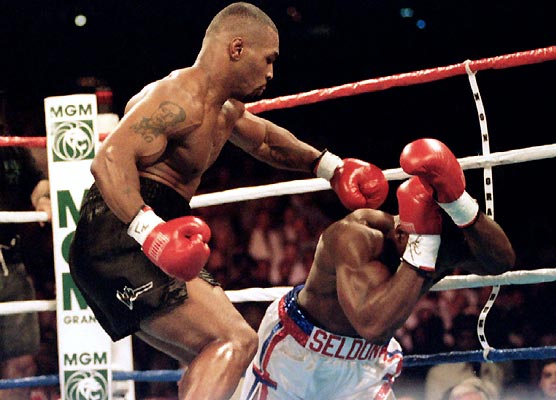
Where One Night in Vegas errs is in its reliance on too many voices, whose disjointed commentaries prevent the film from achieving coherence or even a clear focus. For example, even though Dr. Eric Dyson says that Tupac and Tyson were “utter mirrors of each other,” he provides little to make us understand how this is so and his commentary, reliant as it is on archetypes, is too reductive.
While I don’t agree with Dyson’s opinion that the rapper and the boxer shared completely symbiotic personalities there was one vital similarity that should have been investigated further—how both were ruined by their inability to regulate the very demon that made them so formidable. Without the discipline that enabled his rise, the post-Seldon Mike Tyson gave himself over to his own darkness, repeatedly embarrassing himself in and out of the ring. Tupac, having been emboldened by Suge Knight and the gangster ethos of Death Row Records, had already long-indulged his own death instinct, and his murder served as the awful culmination of a life and career taken in a perilous direction. Both men were driven by forces that required tempering and restraint, but the very energies that made their success possible overcame them.
One Night in Vegas remains a worthy film for those interested in the cultural interplay between sports and music. At times the documentary overtly forces the link and the impassioned segments of spoken word poetry are little more than awkward, but a logical connection can be drawn between Tyson and Tupac through their friendship and how each represented a particularly bellicose form of black culture.
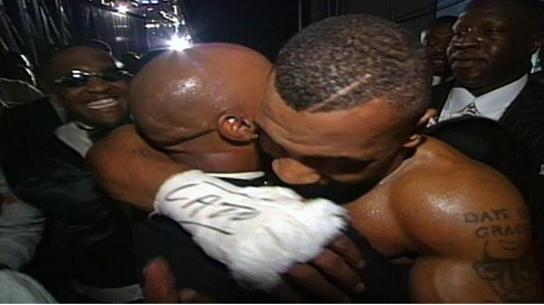
Tupac’s death is an indictment of the macho bravado of the rap milieu he came to epitomize, which was born in the street, commercialized on record, and then fatally reaffirmed in real life through his murder. Tyson’s post-Seldon downfall was abetted by his subservience to the hostile and empty tenets prized by this culture. Who can forget his absurd press conference before the Lennox Lewis fight where, after allegedly biting Lewis, an unstable and insecure Tyson shouted racial epithets at a white reporter while calling himself “the ultimate”?
Boxers and rappers need discipline as the necessary counterweight to their aggression and egotism, a lesson Tupac seemingly forgot. Whether Tyson ever realized this is difficult to know, given his frequently unreliable commentary. That he remains alive today, and has reinvented himself, is perhaps his greatest victory.
— Eliott McCormick

